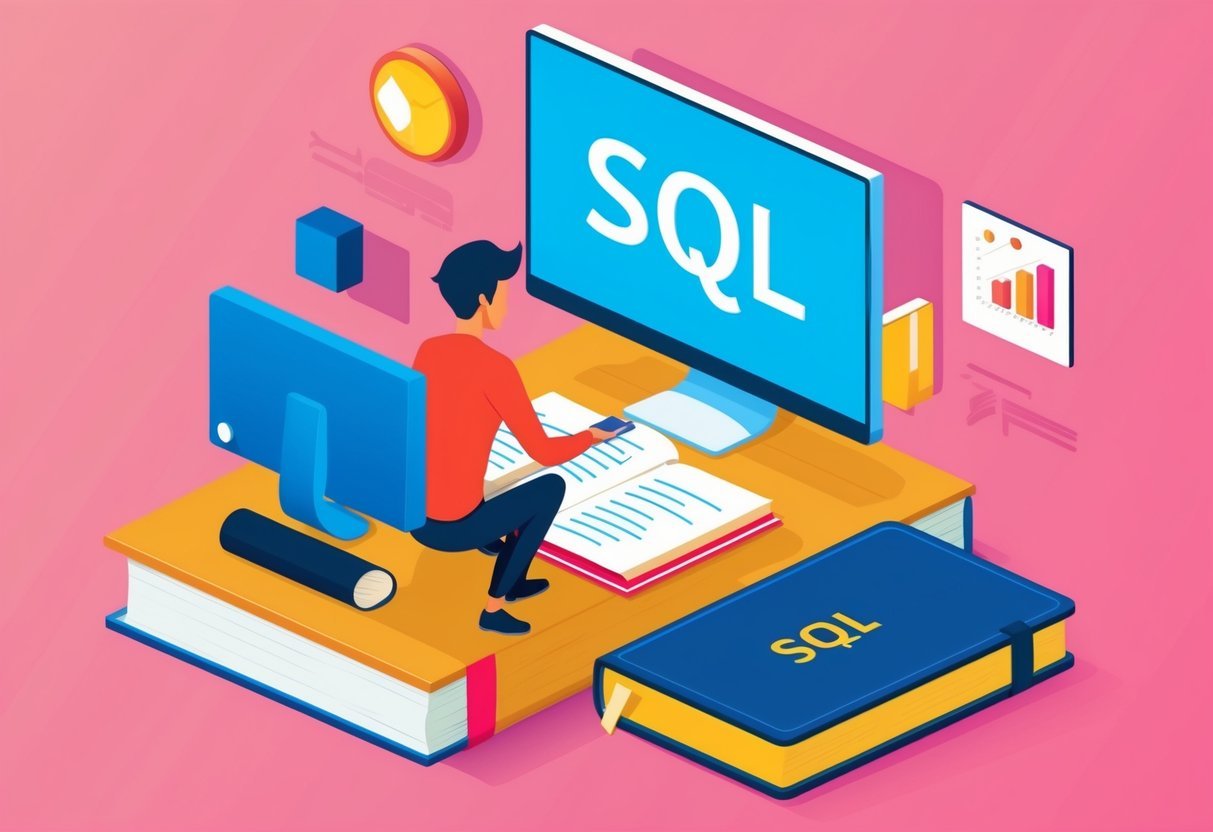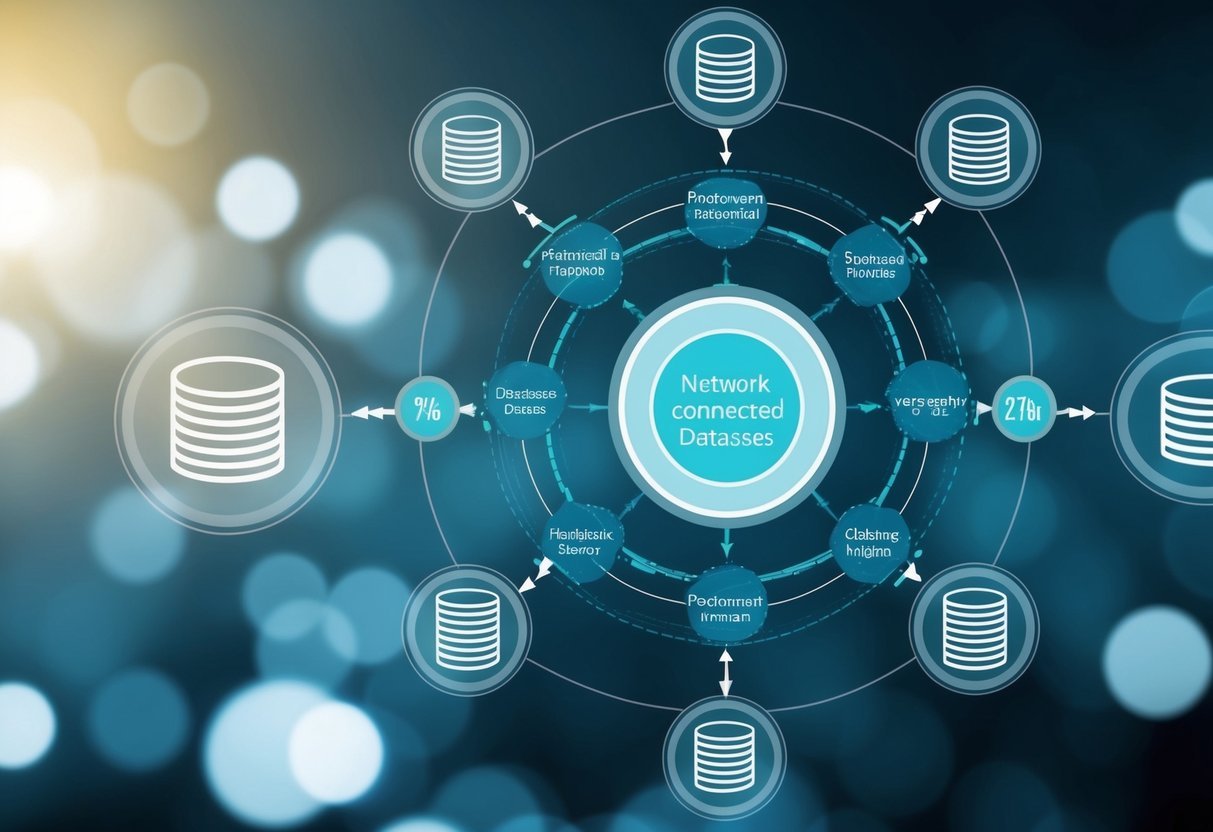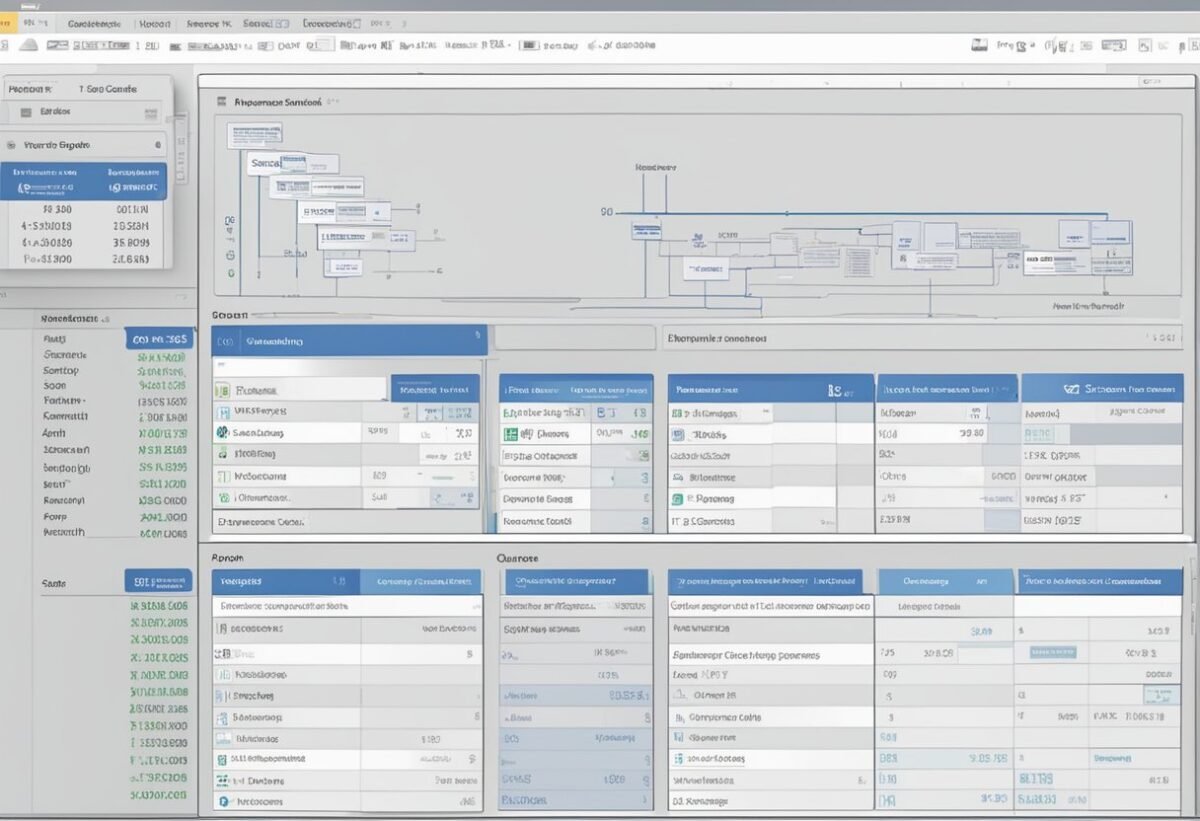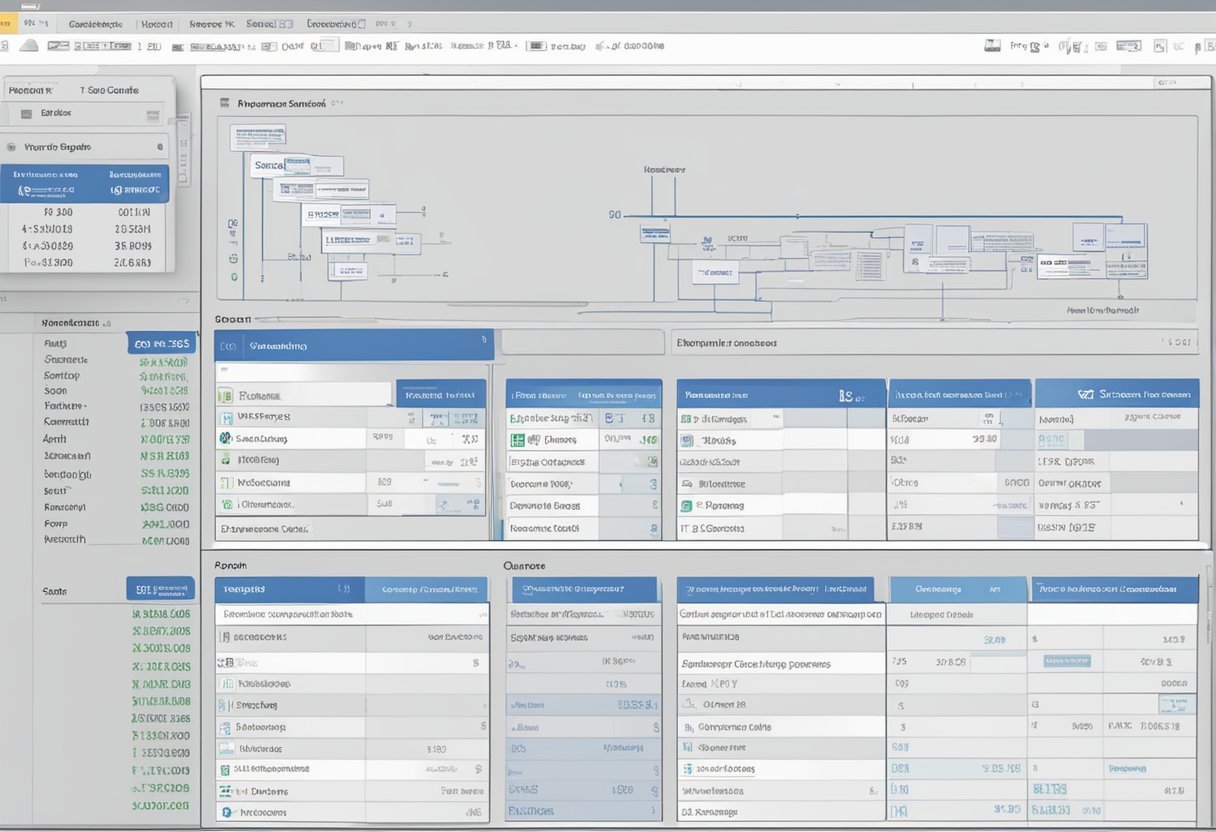Getting Started with Pandas
Pandas is a powerful tool for data science in Python. It allows users to efficiently handle and analyze data.
This section covers key aspects like DataFrames and setting up your programming environment, which are crucial steps in utilizing pandas effectively.
Understanding Pandas and DataFrames
Pandas is a Python library used for data manipulation and analysis. The core of pandas is the DataFrame, a two-dimensional, size-mutable, and potentially heterogeneous tabular data structure.
DataFrames are similar to tables in a database or spreadsheets. They allow easy formatting of data with labeled axes, which makes data cleaning and analysis straightforward.
DataFrames support operations such as merging, reshaping, and pivoting tables. This flexibility is what makes pandas indispensable in data science projects.
Users can load data from various sources like CSVs or databases, perform operations and export the results in different formats. Understanding how DataFrames work is essential for anyone looking to do data analysis with pandas.
Setting Up Your Environment
To use pandas, installing Python is the first step. Python is the programming language that hosts pandas, so ensure you have the latest version.
After Python is installed, use a package manager like pip to install pandas. This is done by running the command pip install pandas in your command line or terminal.
Another setup task is choosing an integrated development environment (IDE) such as Jupyter Notebook or PyCharm. These IDEs provide tools for writing, testing, and debugging code.
Jupyter Notebook is particularly popular for its ease of use and ability to combine written explanations with code. This environment is suited for interactive exploration and quick data experiments, which is ideal for data science projects.
Data Structures in Pandas
Pandas is a powerful library in Python used for data analysis. It primarily deals with two important data structures: Series and DataFrames. Understanding how to use these structures effectively can greatly enhance data manipulation and preparation tasks.
Series and DataFrames
A Series is a one-dimensional labeled array capable of holding any data type. It acts like both a list and a dictionary. Each data point in a Series has an index, making data retrieval simple. Series are perfect for storing single columns from a dataset.
Example:
0 10
1 15
2 20
dtype: int64
A DataFrame is a two-dimensional data structure, similar to a table. DataFrames consist of rows and columns, which are themselves a collection of Series. They are ideal for representing datasets. Users can manipulate and analyze these tables with ease.
Example:
| Index | Column1 | Column2 |
|---|---|---|
| 0 | A | 1 |
| 1 | B | 2 |
| 2 | C | 3 |
Choosing the Right Data Structure
Choosing between Series and DataFrames depends on the data and analysis goals. For single-variable datasets, a Series is efficient and straightforward. It allows for easy operations on individual columns.
DataFrames, on the other hand, are suitable for more complex datasets involving multiple variables. Their table-like structure enables advanced data operations like filtering, grouping, and aggregation.
When working with relational data, DataFrames provide a familiar layout for structuring and analyzing information. Consider the data’s complexity and required operations to determine the most fitting data structure. Proper selection enhances performance and facilitates effective data processing.
Data Importing Techniques
Data importing is a crucial step in working with data science projects. It involves bringing in data from various formats such as CSV, JSON, SQL, and Excel. Each format requires specific methods for efficient importing. Mastering these techniques ensures smoother data analysis with Pandas.
Reading from CSV and JSON Files
CSV files, known for their simplicity, are widely used for data storage due to their compatibility. Pandas offers the read_csv function, making it easy to import CSV files. Users can handle large datasets by using parameters like chunksize to manage memory usage efficiently.
JSON files are another popular format, especially for web data. Pandas provides read_json for seamless data import. This function can parse nested JSON structures into data frames. Users should pay attention to parameters such as orient to correctly interpret the data’s layout.
Importing Data from SQL and Excel
SQL databases are essential for large-scale data storage. With Pandas, data from SQL can be imported using read_sql. Users can perform SQL queries to extract specific data directly into data frames, allowing focused analysis. This method supports both SQLAlchemy and database connection objects.
Excel is a common tool for business data storage. The read_excel function in Pandas enables importing data from Excel worksheets. Users can specify sheets with the sheet_name parameter and handle multiple sheets by providing a list.
Make sure to have necessary libraries like openpyxl installed for smooth Excel file handling.
Data Cleaning Essentials
Data cleaning is a vital step in data preparation. It ensures accuracy and helps in building reliable models. Two important aspects include handling missing values and data type conversion.
Handling Missing Values
Missing values can lead to biased results and potential inaccuracies. Pandas offers several methods to address this issue.
One approach is using the fillna() function, which replaces missing data with specified values. Methods like forward fill (ffill) and backward fill (bfill) are common to propagate values.
Another method involves dropping rows or columns with missing data using dropna(). This is useful when the amount of missing data is substantial. Analyzing the pattern of missing values can help decide whether to fill or drop them.
Using interpolation is also an option when dealing with sequential data.
Data Type Conversion and Normalization
Data type conversion is crucial for efficient data manipulation. Pandas provides functions like astype() to change data types. This is useful when numbers are stored as strings but need to be used as integers or floats.
Normalization scales data to a common range, often 0 to 1. This is important for algorithms sensitive to the scale of the data.
Techniques like Min-Max scaling and Z-score standardization help in normalizing data. The sklearn.preprocessing library offers functions such as MinMaxScaler for this purpose.
Proper data type setup and normalization enhance the data preparation process, making further analysis straightforward.
Exploratory Data Analysis
Exploratory Data Analysis (EDA) is crucial for understanding and preparing data in data science. It involves looking for patterns, identifying anomalies, testing hypotheses, and checking assumptions.
Statistical Analysis Techniques
Statistical methods help uncover the structure of data. Key techniques include calculating measures such as mean, median, variance, and standard deviation. These metrics offer insights into the data’s central tendency and spread.
In EDA, correlation analysis is also a focus. Using correlation coefficients, analysts can measure how variables are related. These analyses can predict relationships and ensure data quality by finding inconsistent or unusual data points.
Unveiling Patterns with Visualization
Visualization tools like matplotlib reveal data patterns and relationships. They transform complex datasets into clear visual formats. Common types of charts include histograms, scatter plots, and box plots.
With data visualization, analysts can spot trends and outliers effectively. It’s a powerful process in data exploration, allowing for a deeper understanding of underlying patterns.
By visualizing data, they can communicate findings more clearly and enable better decision-making.
Data Manipulation with Pandas
Data manipulation with Pandas involves powerful techniques for modifying and analyzing large datasets. It includes manipulating DataFrames and using functions like groupby for complex operations. These tools allow users to transform raw data into valuable insights.
Advanced DataFrame Operations
DataFrames are central to performing advanced operations in Pandas. Users can filter rows using conditions, such as selecting data entries where a column value meets a criterion. Slicing of DataFrames aids in extracting specific parts of the data, facilitating targeted analysis.
Example:
import pandas as pd
df = pd.DataFrame({'A': [1, 2, 3], 'B': [4, 5, 6]})
filtered_df = df[df['A'] > 1]
The ability to add or modify columns provides flexibility. Adding derived columns based on calculations is a common need.
Using the apply function can perform operations on rows or columns. This can be useful in data preparation or feature creation.
Aggregation and Grouping
Aggregation simplifies data analysis by summarizing information. Functions like sum(), mean(), and count() provide quick insights.
The groupby function splits data into groups based on values in one or more columns, enabling simultaneous computation of statistics for each group.
Example:
grouped = df.groupby('A').sum()
Grouping is crucial when handling large datasets. For instance, grouping sales data by region or products reveals trends. This approach aids in identifying relationships and patterns. Understanding grouped data behavior is key for many data science tasks.
Feature Engineering

Feature engineering is crucial in preparing data for machine learning models. It involves creating new variables and transforming existing features to improve model performance. The process can involve techniques like feature selection, binning, and scaling, all of which are essential for effective data analysis and model accuracy.
Creating New Variables
Creating new variables, or feature creation, allows data scientists to derive additional insights from raw data. This can include combining existing features or breaking down complex ones into more understandable parts.
For instance, a date column can be split into separate columns for the year, month, and day, providing more granular insights.
Another approach is to use mathematical operations on features, such as calculating the ratio between two variables. These new variables can highlight hidden patterns or trends that weren’t apparent when viewing the original dataset.
Binning, which groups continuous data into discrete intervals, simplifies data analysis and uncovers relationships between variables.
Transforming Features for Modeling
Transforming features is essential to ensure that data is in a format suitable for machine learning models. This often involves scaling, where numeric features are standardized or normalized to fit a particular range.
Such transformation helps in maintaining the stability and performance of models, especially those sensitive to feature scales like k-nearest neighbors (KNN).
Another transformation technique is encoding categorical variables into numerical ones, often necessary for algorithms that require only numerical input.
Feature selection, which identifies and retains useful features while discarding irrelevant ones, enhances model efficiency by reducing complexity and improving prediction accuracy.
By carefully transforming features, data scientists enhance both the training speed and the predictive power of their models.
Improving Performance

Enhancing performance when using Pandas for data preparation is crucial. It mostly involves optimizing memory and speeding up computations. Essential techniques include minimizing memory usage and utilizing vectorization to accelerate operations. These methods help in handling larger datasets more efficiently.
Optimizing Memory Usage
Reducing memory load is vital, especially with large datasets.
One effective method is data type adjustment. By changing data types to more efficient ones, memory usage decreases. For instance, use float32 instead of float64 for floating-point data if the precision is acceptable.
Another strategy is dropping unnecessary columns early in data processing. This avoids retaining irrelevant data that can consume memory.
Indexing is another important aspect; setting the index to the most relevant column can speed up lookups and reduce memory load.
Categorical data can further optimize memory, as converting strings to category types can save significant space.
Monitoring memory usage with methods like .info() ensures that data adjustments are effective.
These techniques aim to maintain performance while managing resources efficiently.
Vectorization for Speed
Vectorization in Pandas involves executing operations on entire arrays rather than individual elements, providing a speed advantage.
Utilizing libraries like NumPy is crucial due to its efficient handling of vectorized operations.
Vectorized operations replace slower Python loops with operations that run at C speed. For example, applying functions across a column without explicit loops can greatly enhance execution time.
Leveraging Pandas’ built-in functions that utilize vectorization also boosts performance.
Additionally, understanding function implications is crucial. Some functions may not support vectorization, leading to slower speeds.
Always prefer vectorized built-in methods for data manipulation. This approach ensures that data processing is both effective and efficient, maximizing Pandas’ speed capabilities.
Data Preparation for Machine Learning
Data preparation is essential for machine learning to ensure accurate models. It involves cleaning, transforming, and organizing data so that algorithms perform well.
Efficient data preparation can greatly improve the quality of machine learning results.
Data Preprocessing Steps
Data preprocessing is a key part of preparing data for machine learning. It includes several important tasks:
- Cleaning Data: Remove or correct any inaccurate records to ensure data quality.
- Handling Missing Values: Imputation techniques, such as mean or median replacement, fill gaps where data is missing.
- Normalization and Scaling: Adjust the data so that each feature contributes equally to analysis. This often involves scaling values to a 0-1 range or standardizing them to have a mean of zero and a standard deviation of one.
- Encoding Categorical Variables: Convert non-numeric categories into numeric formats using techniques like one-hot encoding.
These steps ensure the data is in the best shape for machine learning algorithms.
Integration with Scikit-learn
Scikit-learn is a popular library in machine learning that provides tools for data preprocessing. It has built-in functions to automate data preparation tasks:
- Imputation: The library offers the
SimpleImputerclass for filling missing values effectively. - Data Transformation: With
StandardScalerandMinMaxScaler, scikit-learn helps in scaling and normalizing data seamlessly. - Encoding: It supports transforming categorical data into numeric using
OneHotEncoder.
These capabilities make scikit-learn a powerful tool for preparing data efficiently, reducing the time and effort needed to manually process data for machine learning models.
Understanding Correlations
Correlations are essential in data analysis, helping to identify the relationships between different variables. This section explores key metrics used to measure correlations and how to visualize these relationships effectively using plotting tools.
Correlation Metrics
Correlation metrics are measures used to assess how strongly two variables are related.
The most common metric is Pearson’s correlation coefficient, which ranges from -1 to 1. A value of 1 indicates a perfect positive relationship, while -1 indicates a perfect negative relationship. A value of 0 means no correlation.
Spearman’s rank correlation coefficient is another useful metric, particularly when dealing with ordinal data. It assesses the monotonic relationship between two variables.
Kendall’s Tau is also helpful for non-parametric data, offering another way to measure relationships without assuming normal distribution.
Choosing the right correlation metric is crucial, depending on the data’s nature and distribution. It helps in uncovering patterns that can be critical for predictive analysis and decision-making in data science projects.
Visualizing Correlations
Data visualization is a vital tool for understanding correlations.
Graphical representations like scatter plots provide a simple way to see relationships between variables.
Using tools like Matplotlib, one can create detailed visualizations that clearly indicate the strength and direction of a correlation.
Correlation matrices are also effective, displaying correlations between multiple variables in a table format. Heatmaps, which color-code the correlation values, make it easy to recognize patterns.
For interactive visual exploration, libraries such as Seaborn offer enhanced plotting capabilities integrated with Matplotlib, improving readability and interpretation.
Visualizations not only make the data more accessible but also help communicate findings clearly to stakeholders.
Advanced Visualization Techniques
Advanced visualization techniques in data science are crucial for gaining insights from data. Techniques like interactive plots enhance user engagement, while best practices ensure clarity and accuracy in data representation.
Interactive Plots with Matplotlib
Creating interactive plots can significantly enhance data visualization.
Matplotlib, a popular library in Python, offers tools to create interactive charts and graphs. These plots allow users to zoom, pan, and update data dynamically.
Interactive plots are beneficial in data science as they provide a deeper understanding of patterns and trends.
Using tools like mpld3, the standard matplotlib plots can be made interactive.
Embedding these plots in web applications or reports can further enrich data storytelling, giving analysts better control over the way data narratives are constructed.
Data Visualization Best Practices
Adhering to best practices in data visualization ensures that the data is both clear and informative.
It’s essential to choose the right type of visualization for the data being analyzed. For instance, line charts are great for time series, while bar charts are suitable for categorical data.
Clarity is crucial, so avoiding clutter is important. Limit the use of unnecessary elements such as heavy grid lines or excessive colors.
Proper labeling and scales help in accurately interpreting the data.
Tools like Matplotlib provide options to customize plots to follow these practices effectively, ensuring that the final output is both visually appealing and insightful.
Learning Resources and Next Steps
For those eager to master data science with Pandas, plenty of resources are available to guide the journey. These include comprehensive Python courses and books, and opportunities to practice coding with online platforms.
Python Courses and Books
Several books provide detailed insights into using Pandas for data science.
“Python for Data Analysis” is popular for beginners and experts alike, offering step-by-step guidance on data wrangling and feature creation. If hands-on learning is preferred, “Hands-On Data Analysis with Pandas” can be quite helpful for practical applications.
Both books cover essential principles of Pandas, NumPy, and IPython.
Online courses complement these books by providing interactive learning. Many platforms offer courses that introduce the Pandas library and Python fundamentals. These courses often include projects for students to apply what they’ve learned, which can boost their coding experience.
Practicing with Online Platforms
Online platforms like Google Colab offer a practical environment to practice coding with Pandas.
Google Colab enables users to write Python code in a collaborative notebook interface. This is great for hands-on experience, as users can run code online without setting up a local environment.
Furthermore, websites like Kaggle provide datasets and challenges to sharpen data analysis skills.
Participating in these challenges helps apply skills in real-world scenarios, improving proficiency in utilizing Pandas for data manipulation.
These platforms are perfect for continuous learning and application in data science projects.
Frequently Asked Questions

In data science, using Pandas for data preparation and feature creation is essential. Many want to know how to use this tool to its fullest. This section answers common questions about creating new features, handling missing data, and finding the best learning resources.
How can I create new features from existing data using Pandas?
Creating new features involves using Pandas functions like apply(), map(), and transform(). These can modify existing columns or combine them in new ways.
Methods like groupby() allow users to aggregate data, creating new insights from existing datasets.
What are the best practices in data preparation for data science with Pandas?
Best practices include cleaning data by removing duplicates and handling missing values.
Consistent data types across columns are important. Using astype() can help convert data types.
Ensure data is normalized and consistent, which helps in making accurate models later.
Where can I find a comprehensive tutorial for learning Pandas for data analysis?
Books like Learning pandas provide detailed insights.
Online platforms like Coursera and DataCamp offer step-by-step tutorials. These resources include examples of real-world applications, making it easier to understand.
What steps should I follow to master Pandas in the context of data science?
Start with basic operations like loading and filtering data.
Practice using functions like merge(), concat(), and pivot_table() for data manipulation.
Explore advanced functions such as apply() for custom transformations. Consistent practice on datasets will solidify skills.
How do I handle missing data when preparing my dataset with Pandas?
Handling missing data can be done using functions like fillna() and dropna().
Decide whether to fill missing values with the mean, median, or a constant value, or remove them altogether.
Consider the impact on your analysis and choose the right approach.
Can you suggest any resources for advanced data manipulation techniques using Pandas?
Hands-On Data Analysis with Pandas provides advanced techniques like data wrangling and visualization. It also covers using Python packages to extend Pandas capabilities. This resource is excellent for those already familiar with basic operations and looking to deepen their skillset.






































